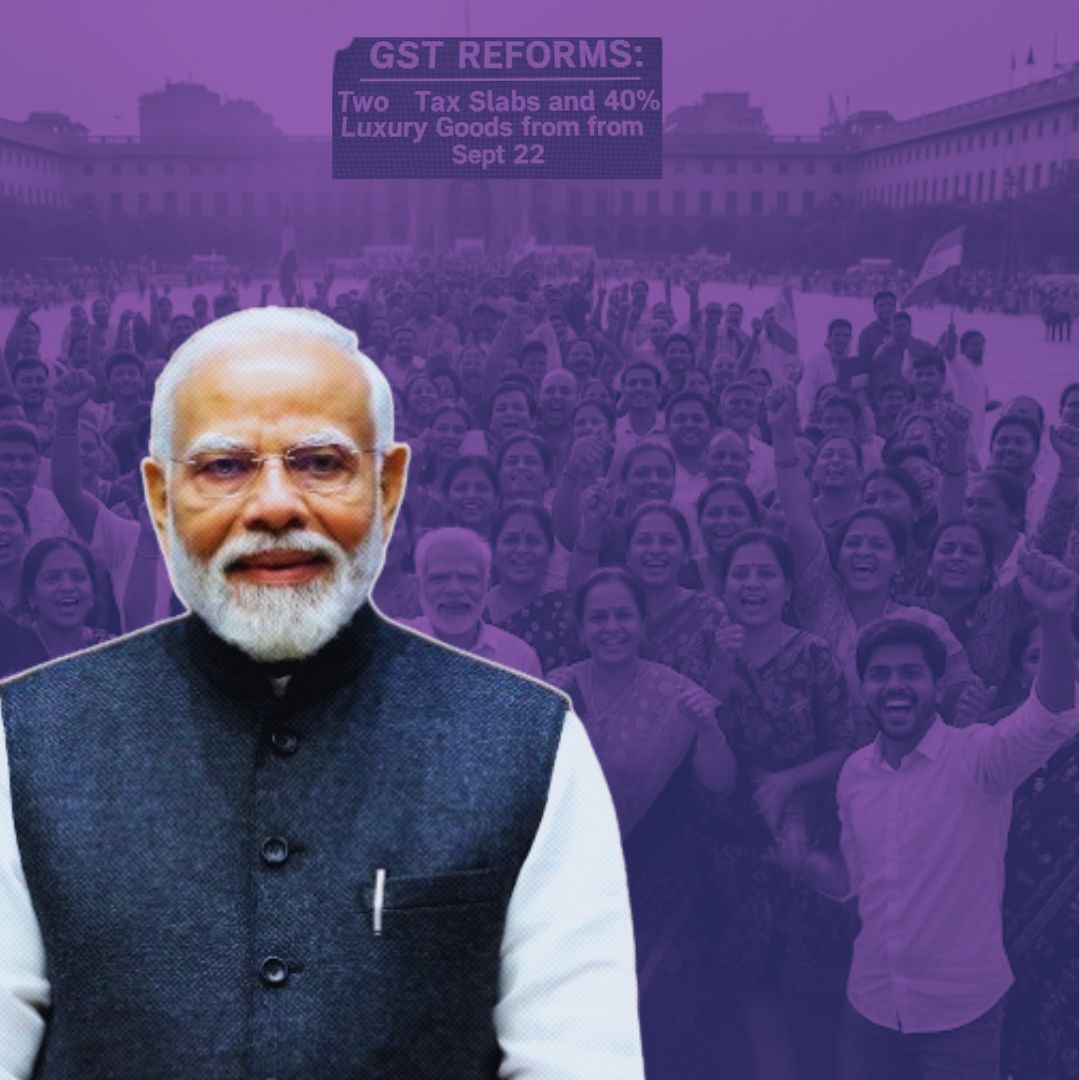On September 3, 2025, Prime Minister Narendra Modi unveiled a landmark overhaul of India’s Goods and Services Tax (GST) system, describing it as a “double dose of support and growth” for the nation. The reforms introduce a simplified two-tier GST structure consisting of 5% and 18% tax slabs, with a new 40% slab on luxury and sin goods, effective from September 22.
The changes aim to reduce the tax burden on consumers, especially on daily essentials, health insurance, agriculture, and small businesses, while maintaining revenue by taxing luxury and harmful goods higher.
Finance Minister Nirmala Sitharaman and officials highlighted this as a growth-friendly and inclusive reform that will spur consumption and simplify tax compliance. Industry groups mostly welcomed the changes, though some smaller businesses voiced concerns about adapting to the new regime.
Simplifying GST for Consumers and Businesses
The GST Council’s 56th meeting, chaired by FM Sitharaman, approved the reforms unanimously. The new GST regime replaces the previous four-tier system (5%, 12%, 18%, and 28%) with just two standard slabs: 5% on essentials and 18% on most goods and services. Additionally, a 40% slab is introduced to cover sin and luxury items such as tobacco, private aircraft, and high-end cars.
Nirmala Sitharaman emphasised that this restructuring would provide significant relief to common households by reducing rates on items including hair oils, shampoos, butter, ghee, cheese, sewing machines, feeding bottles, medical oxygen, and health insurance, which will now attract no GST.
Agriculture machinery, farming supplies like bio-pesticides, tractors, and drip irrigation systems also become cheaper with the 5% rate, reflecting a focus on supporting farmers and labour-intensive sectors.
Notable Features and Statistics
The government explained that these changes would reduce tax complexity and facilitate smoother filing processes through digitisation, faster refunds, and simplified return procedures. Revenue Secretary Sanjay Malhotra noted, “The reforms offer a balanced roadmap between consumer relief and fiscal responsibility.” For example, automobiles like petrol and diesel cars under specified engine capacities now face an 18% GST instead of the earlier 28%.
Electronics such as air conditioners and televisions also benefit from the rate cuts. However, tax on sin goods including aerated drinks, cigarettes, and tobacco products sees a new 40% levy alongside existing cess, ensuring revenue streams and public health considerations remain key priorities. Experts calculate the government’s short-term revenue sacrifice at roughly ₹48,000 crore, anticipated to be offset by increased consumption and compliance improvements in the medium term.
Historical Context and Gradual Evolution
Introduced in July 2017 as India’s most ambitious tax reform, GST replaced a complex array of state and central indirect taxes with a unified consumption-based system. Initially, GST faced operational problems, including compliance burdens for SMEs and confusion over multiple tax slabs. Over the years, demands for rationalising GST slabs grew from economists, businesses, and policymakers alike.
The current reforms mark the biggest revision since GST’s launch, following months of consultations with states, industry groups, and tax experts. The 40% slab on sin and luxury goods is a new fiscal tool balancing tax fairness with revenue needs. These changes come at a crucial time as India aims to stimulate growth and ease inflationary pressures ahead of the festive season and economic recovery.
The Logical Indian’s Perspective
The recent GST reforms are a vital step towards a more equitable and growth-friendly tax system. While the government’s vision of simplifying taxes and easing the financial load for ordinary citizens is commendable, true success requires policies that reach the weakest and smallest traders, farmers, and consumers without adding burdensome transition challenges.
The Logical Indian believes that empathy, education, and continuous dialogue with stakeholders must underpin these reforms to foster inclusive economic empowerment.











